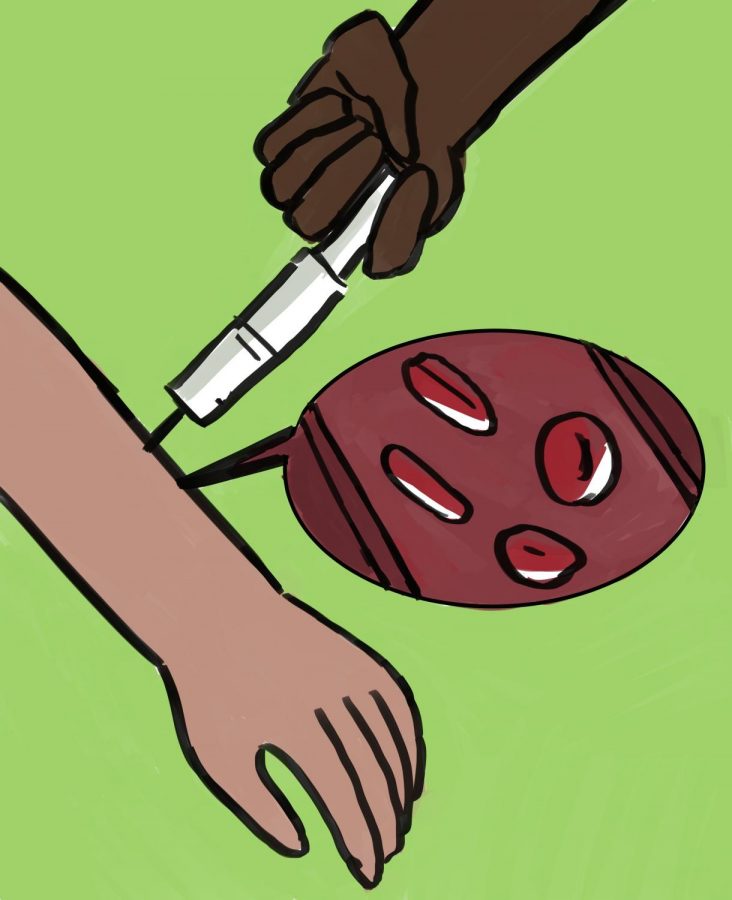Science Explained: How do vaccines work?
Herd immunity protects those who cannot be immunized; types of vaccines include live-attenuated, inactivated, recombinant
There are three types of vaccines: live-attenuated, inactivated and recombinant. Vaccines protect people from contracting preventable diseases like the measles.
June 10, 2020
As many states begin to reopen, the development of a COVID-19 vaccine has been an important topic of discussion, but many people wonder: what exactly is in a vaccine that helps humans develop immunity?
Types of vaccines
Felix Lankester, assistant professor for the Paul G. Allen School for Global Animal Health and director of Rabies Free Tanzania, said there are many types of vaccines. Inactivated and live-attenuated vaccines are two of the basic varieties.
Inactivated vaccines consist of a virus that is “dead” or disabled, so it cannot cause disease. This is the case with the rabies vaccine, Lankester said.
“Those inactivated virus particles — when they’re injected into an animal or a person — are able to stimulate the immune response to make antibodies against the live virus,” he said. “The vaccine doesn’t cause the disease, but it is able to stimulate antibody production.”
Live-attenuated vaccines contain a weakened form of a virus that still produces an immune response without causing sickness. However, one risk of live vaccines is that they can, on rare occasions, cause the disease they are meant to prevent, Lankester said. This is called “return to virulence.”
Another more modern approach to vaccination is in the form of a recombinant vaccine, Lankester said. This involves using genetic engineering to take parts of a virus’s genetic code to insert (or “splice”) it into the genetic code of a milder virus.
The genetic parts that are spliced often code for a piece of the virus that triggers an immune response, such as the spike proteins on coronaviruses.
Recombinant vaccines allow the body to recognize very specific parts of a virus, but because those parts are displayed on a milder virus, the body will not get sick.
Antibodies, antigens and white blood cells
Antibodies are Y-shaped molecules that bind to certain antigens — similar to how a key fits into a lock. Antigens are molecules on pathogens that allow them to be recognized in the body, which then stimulates an immune response.
White blood cells are an important component of the body’s immune system. One specific type of white blood cell, called a B cell, is responsible for recognizing foreign viral particles and producing antibodies against them.
Antibodies bind to the antigens on pathogens and signal other white blood cells to come and destroy them, preventing the body from getting sick.
Herd immunity
Dr. Kimberly McKeirnan, clinical associate professor of pharmacotherapy at the WSU College of Pharmacy and Pharmaceutical Sciences, said some people do not see the value in getting vaccinated if they are not likely to be affected by a disease themselves.
“Nobody likes getting stuck in the arm with a needle, so is it worth doing?” McKeirnan said. “Absolutely. [Vaccines] keep not only you safe, but keep you from spreading disease to other people.”
Diseases like measles are no longer a problem in many countries. This is because enough people are vaccinated against the disease, so it reaches dead ends within a population and cannot spread any further.
“Herd immunity is the concept that if a majority of people have this vaccine, then they will prevent the minority, who are not able to be vaccinated, from getting sick,” McKeirnan said.
Some people are unable to get vaccinated because they have allergies to vaccine ingredients or are immunocompromised, she said.
The percent of a population that needs to be vaccinated to achieve herd immunity can depend on the disease in question but can be as high as 90 or 95 percent.
“Looking at return on investment, vaccines, in general, are not very expensive … you spend a little bit of time and get a little bit of a sore arm,” McKeirnan said, “but to be able to prevent things when we’re never really sure [how the disease] is going to be able to affect us, is huge in a lot of people’s eyes.”
*This article has been updated to include Kimberly McKeirnan’s position at the WSU College of Pharmacy and Pharmaceutical Sciences.
Science Explained is an article series that aims to describe popular science topics without technical jargon that can be confusing for non-science audiences. Each article will cite professors, researchers or experts at WSU, as well as available online research to explain science in a way that is understandable and interesting.
Emma Ledbetter is the author of Science Explained. She is a microbiology major and is going into her fifth semester working at The Daily Evergreen.











